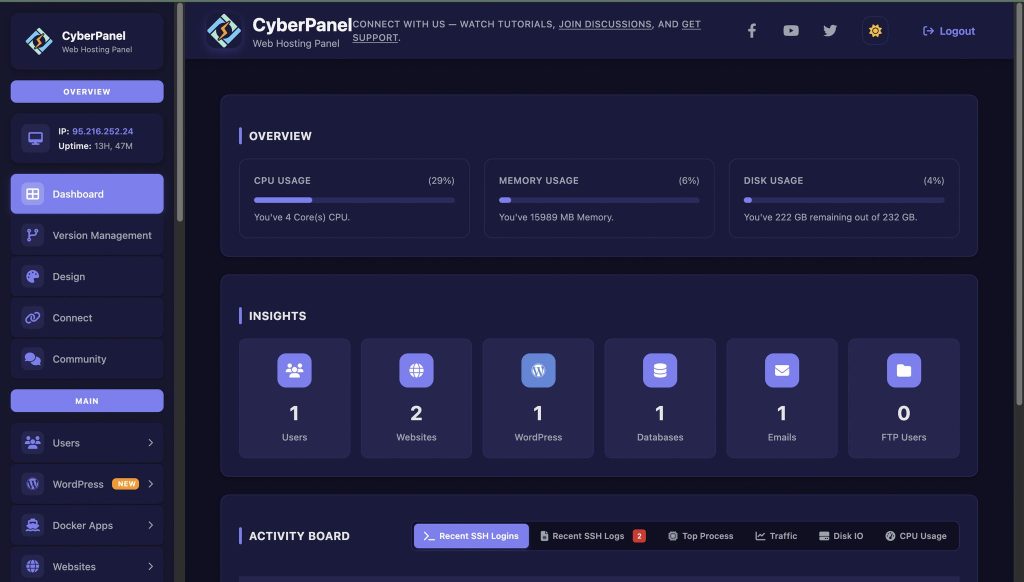If you get file system errors while using a Linux system, the fsck command in Linux is the tool you need. It is known as the File System Consistency Check. The fsck command in Linux is designed to scan, repair, and maintain healthy storage structures on a Linux system. Without this command, corrupted data and improper shutdowns could cause major issues. Whether you are a professional or a beginner, you should know how to properly use the fsck command in Linux. Because it will save you hours of troubleshooting.
In this guide, we will learn about the fsck command in Linux with examples. Let’s learn together!
What is fsck Command in Linux?
The fsck command in Linux checks and repairs file system inconsistencies. It is able to scan partitions for corruption, lost inodes, and bad blocks. After that, it attempts to fix them. This all prevents data loss and ensures smooth operation of Linux servers and desktops.
How to Use fsck Command in Linux?
You can use the fsck command in Linux on a specific partition by running the following command:
sudo fsck /dev/sda1
This command will check and repair errors on the /dev/sda1 partition. You should always unmount the partition before running fsck to avoid conflicts.
fsck Command in Linux with Examples
Here are some examples of the fsck command in Linux:
Get exclusive access to all things tech-savvy, and be the first to receive
the latest updates directly in your inbox.
| Command | Description |
|---|---|
sudo fsck /dev/sda1 | Check and repair a single partition |
sudo fsck -A | Check all file systems listed in /etc/fstab |
sudo fsck -y /dev/sdb2 | Automatically repair errors without asking |
sudo fsck -n /dev/sdc1 | Scan without making changes |
sudo fsck -C /dev/sda3 | Show progress during repair |
fsck from util-linux 2.38
/dev/sda1: clean, 240183/512000 files, 1048576/2097152 blocks
This means the partition was clean and no errors were found.
fsck Command in SUSE Linux
The usage is the same in SUSE Linux. However, the system runs fsck automatically during boot if errors are detected. Here is how you can check a partition manually:
sudo fsck /dev/sda2
SUSE also integrates fsck with YaST for easier management. However, the command-line fsck remains the most reliable for deep checks.
Best Practices for fsck in Linux
Here are some best practices for you to follow while using the fsck command in Linux:
- Always unmount the partition before running fsck.
- Run
fsck -nfirst to preview issues. - Use
-yfor unattended repairs. - Schedule periodic checks for servers.
- Avoid running fsck on mounted root partitions—use rescue mode instead.
Role of CyberPanel in File System Management

We know that fsck works at the file system level. But CyberPanel, being a web hosting control panel, ensures that web hosting servers remain stable. It can manage websites, databases, and email services. When your Linux server uses CyberPanel, fsck can repair file system issues. And CyberPanel helps maintain smooth site operations.
People Also Ask
Can fsck fix bad sectors on a disk?
No. The fsck only marks bad blocks and moves data.
How frequently should I run fsck on Linux servers?
For production servers, you should run fsck monthly. And desktop users can run it less frequently.
Is fsck safe to run on mounted partitions?
No. If you run fsck on mounted partitions, it can cause data corruption. So, you should always unmount it before using it.
Final Thoughts!
To sum up, the fsck command in Linux is important to prevent file system corruption. It keeps data safe. You should learn how to use the fsck command in Linux with the right options. Because it gives you full control over maintenance. Whether you are using SUSE Linux or any other distribution, fsck ensures reliability.

Do you need a stable hosting environment? Combine fsck for storage health with CyberPanel for server management today!



